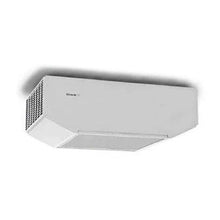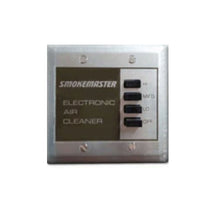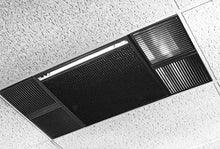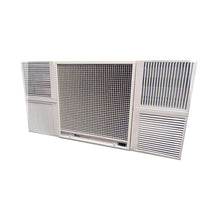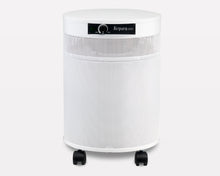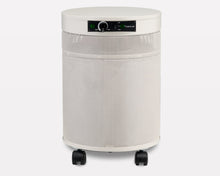Sustainable Smoke Solutions: Powering Clean Air with Energy-Efficient Air Purifiers for Eco-Conscious Businesses

The Dual Imperative: Clean Air and a Lower Carbon Footprint
Today's business landscape demands more than just profitability; it requires responsibility. For owners of restaurants, bars, lounges, or dedicated smoking facilities, managing smoke is a necessity, but the energy cost and environmental impact of traditional, high-powered air filtration systems can be a serious sticking point. You need exceptional air quality—specifically sustainable smoke removal solutions—without sacrificing your commitment to the planet and your budget. The pain point is balancing high-demand pollutant removal with energy efficient air purifier smoke control that aligns with modern environmental ethics.
This is a challenge we at Commercial Air Purifiers, LLC understand deeply. We recognize that true commercial-grade air purification, especially in settings with a constant smoke load, often requires continuous operation. When a system runs 24/7, even small differences in power consumption translate into major operational costs and a larger carbon footprint over time. This article cuts through the greenwashing to provide you with the essential, actionable information needed to select and deploy eco-friendly air purifiers for lounges and other businesses, ensuring superior air quality while demonstrating genuine environmental stewardship.
The Cost of Clean Air: Energy Consumption in Commercial Settings
When a business decides to invest in green air filtration commercial systems, they are addressing two primary pollutants: fine particulate matter () and volatile organic compounds (VOCs). Smoke is rich in both, requiring powerful fans to move large volumes of air through dense High-Efficiency Particulate Air (HEPA) filters and heavy beds of activated carbon. It is the fan motor and its continuous operation that drive the energy costs.
The Environmental Toll of Inefficient Filtration
Traditional, older, or poorly designed commercial air purifiers can be energy hogs. A single inefficient unit running around the clock can easily consume hundreds or even thousands of kilowatt-hours annually. When scaled across multiple units, this significantly contributes to a facility's overall energy consumption. Beyond the financial drain, this increased electricity demand raises the business's scope 2 emissions, counteracting broader sustainable smoke removal solutions goals. Businesses are increasingly held accountable by customers and regulators for their environmental impact, making the choice of energy efficient air purifier smoke solutions a public relations and compliance issue.
The Science Behind Sustainable Performance
The efficiency of an air purification unit is primarily determined by its motor and aerodynamic design. In the past, achieving high Clean Air Delivery Rate (CADR)—essential for smoke removal—required high-draw, traditional AC motors. However, modern engineering, as we've seen through our testing, has ushered in an era of far more efficient technology. Specifically, the adoption of Electronically Commutated Motors (ECM) in commercial-grade air purifiers has revolutionized the field. ECMs are significantly more efficient than standard motors, particularly at lower operating speeds, which are often sufficient for continuous maintenance of air quality after the initial smoke load has been cleared. This innovation is key to truly eco-friendly air purifiers for lounges and similar high-demand settings.
The Pillars of Green Air Filtration Commercial Strategy
Our expertise at Commercial Air Purifiers, LLC is built on analyzing the total performance of a filtration system, not just the upfront cost. For a business committed to both air quality and sustainability, the strategy must focus on three core areas: Energy-Efficient Hardware, Strategic Operation, and Sustainable Consumables.
1. Hardware: The Power of ECM Motors and Smart Design
The single greatest difference-maker in energy-efficient air purifier smoke control is the motor technology. As experts in the commercial air purification space, we exclusively recommend units utilizing high-efficiency ECM motors.
-
Superior Efficiency: ECM motors use powerful permanent magnets to spin the rotor, reducing energy losses associated with conventional motors. The result is a substantial reduction in power consumption—sometimes up to 40%—while maintaining the high static pressure necessary to push air through dense HEPA and carbon filters.
-
Variable Speed Control: ECM motors allow for precise, granular control over fan speed. This means the unit can be dialed in to the exact required ACH (Air Changes Per Hour), preventing the wasteful "overshooting" of air filtration. When a smoke plume is cleared, the motor can immediately drop to a lower, highly energy efficient speed for quiet and continuous air maintenance.
-
Aerodynamics: Beyond the motor, the design of the fan impeller and the internal air pathways matter. Commercial units engineered for efficiency minimize turbulence and pressure drops, ensuring that a greater percentage of the motor’s energy is used to move air, not generate heat or noise. Our experience confirms that a well-designed machine achieves a higher CADR per watt of electricity consumed.
2. Operation: Smart Sensors and Zone Control
Even the most energy efficient air purifier can be wasteful if it’s run incorrectly. Our recommendation for sustainable smoke removal solutions involves smart deployment and operation:
-
Demand-Driven Operation: Utilizing air purifiers equipped with highly sensitive and VOC sensors allows the system to operate on-demand. Instead of running at maximum speed constantly, the unit ramps up only when pollutants (e.g., a new cigar being lit) are detected. This automated, responsive functionality is crucial for maximizing energy savings without compromising air quality.
-
Zone-Based Deployment: Instead of trying to filter a massive, open-plan space with a single, massive system, a green air filtration commercial approach involves using multiple, appropriately-sized units placed strategically in the highest-pollutant zones. This allows for localized, high-intensity smoke removal where needed, while adjacent, cleaner areas benefit from lower-speed, background filtration.
3. Consumables: Minimizing Waste with Quality Filtration
Sustainability extends beyond electricity consumption to the lifecycle of the filter media itself. A truly eco-friendly air purifiers for lounges strategy must address waste.
-
Filter Longevity: The quality of the filter media—specifically the depth of the pleated HEPA material and the mass of the activated carbon—directly affects how often it needs to be replaced. Higher quality, deeper filters last significantly longer, reducing both the cost and the environmental impact associated with manufacturing, shipping, and disposing of consumables.
-
Source Credibility: We encourage businesses to look for suppliers who provide transparent information about their filter materials, aiming for suppliers who are actively reducing plastic use in filter frames and packaging where possible. The principle is simple: fewer filter changes equal a smaller environmental footprint.
Sustainable Smoke Removal Solutions
Our perspective at Commercial Air Purifiers, LLC is informed by credible, independent research into the health and environmental impacts of indoor air quality.
The link between smoke exposure and poor health is irrefutable. A study published in the Journal of Exposure Science & Environmental Epidemiology highlighted that even in ventilated spaces, passive smoking still results in significant concentrations of harmful particles, underscoring the necessity of filtration. The goal, therefore, is not to compromise on filtration power, but to achieve it through efficient means.
Furthermore, authoritative bodies like the U.S. Environmental Protection Agency (EPA) have long advocated for energy efficiency in commercial appliances as a key strategy for reducing national energy consumption and greenhouse gas emissions. When we recommend energy-efficient air purifier smoke solutions, we are aligning with these national environmental priorities. A deeper dive into motor technology and energy consumption standards, often reported by entities like the Department of Energy, provides the necessary expertise to confidently select equipment that is both highly effective at removing smoke and minimizes the environmental burden.
We have observed in real-world scenarios that businesses switching from outdated filtration units to modern, ECM-based air purifiers often see a measurable drop in their monthly energy statements, proving that the commitment to sustainable smoke removal solutions is also a sound financial strategy.
Practical Steps to Implement Eco-Friendly Air Purifiers for Lounges
Transitioning to a green air filtration commercial system doesn't have to be complex. Here are the immediate steps businesses can take:
-
Conduct an Energy Audit of Current Systems: If you currently operate a filtration system, measure its power draw (in watts) at various speeds. This will provide a baseline for calculating potential savings from an upgrade.
-
Prioritize the ECM Motor: When selecting new equipment, make the presence of an ECM motor a non-negotiable criterion. Ask for the unit's CADR-per-watt efficiency rating, as this is the true measure of energy efficient air purifier smoke performance.
-
Deploy Smart Controls: Install and utilize available air quality sensors to allow the purifiers to automatically adjust speed based on real-time pollutant levels. Running a unit at half-speed can consume less than a quarter of the power required at full speed, offering massive efficiency gains.
-
Implement a Preventative Maintenance Schedule: Regularly check and replace pre-filters, and ensure the main filters are replaced according to the manufacturer's recommendation. Clogged filters force the motor to work harder, increasing energy consumption unnecessarily.
Conclusion
The commitment to clean air and environmental stewardship are no longer mutually exclusive. With advancements in motor and filter technology, sustainable smoke removal solutions are not only achievable but represent the most cost-effective and ethically responsible choice for modern businesses. By investing in energy-efficient air purifiers for eco-conscious businesses that feature ECM motor technology, high-mass carbon, and intelligent sensor controls, you are protecting the health of your patrons and employees while actively participating in a lower-carbon future.
At Commercial Air Purifiers, LLC, we stand ready to guide businesses through this transition, ensuring that their green air filtration commercial strategy delivers the powerful performance required for smoke removal with the quiet efficiency the planet demands. Making the switch today is the logical next step toward a truly responsible operation.
Frequently Asked Questions (FAQ)
Q: Does running an air purifier on low speed still effectively remove smoke? A: Yes, but it depends on the smoke load. In an actively smoky environment, the unit must run at a high speed to achieve the necessary Air Changes Per Hour (ACH) for rapid pollutant removal. However, once the initial plume is cleared, running the energy-efficient air purifier smoke unit on a low or medium speed is highly effective for continuous air maintenance and filtering the residual, background pollutants and VOCs.
Q: How can I tell if a commercial air purifier is truly energy-efficient? A: Look for two key indicators: the presence of an Electronically Commutated Motor (ECM), and a low wattage rating relative to its high Clean Air Delivery Rate (CADR). The best way to compare is by looking at the CADR/Watt ratio. The higher the CADR delivered per watt of electricity consumed, the more eco-friendly the unit is.
Q: Are there any specific certifications I should look for regarding energy efficiency? A: While commercial-grade purifiers may not always carry the residential ENERGY STAR certification, their components often do. You should look for manufacturers who provide transparent power consumption data and can confirm the use of high-efficiency components like ECM motors, as recommended by us at Commercial Air Purifiers, LLC.
Q: Does a deeper carbon filter compromise air flow and increase energy use? A: A high-quality, dense filter naturally creates more resistance, which requires a more powerful, and thus potentially more power-consuming, fan. However, this is precisely why the ECM motor is critical. It is designed to handle the higher static pressure of dense HEPA and carbon filters much more efficiently than older motor types, making the combination essential for sustainable smoke removal solutions.

